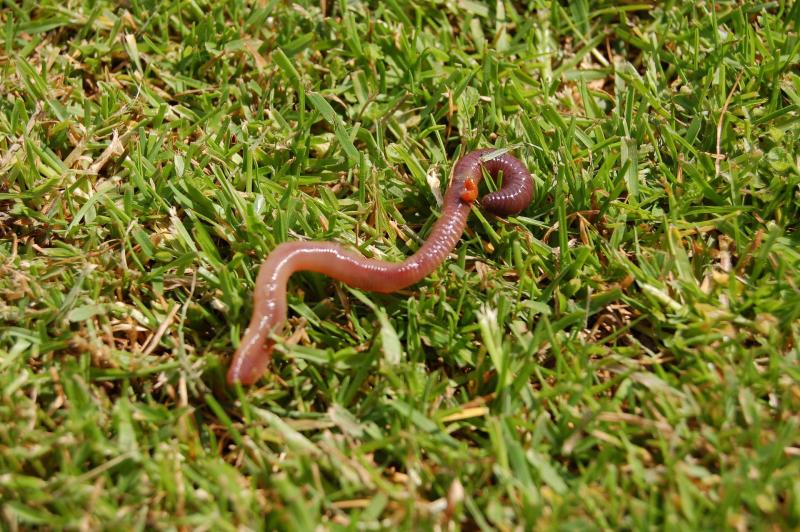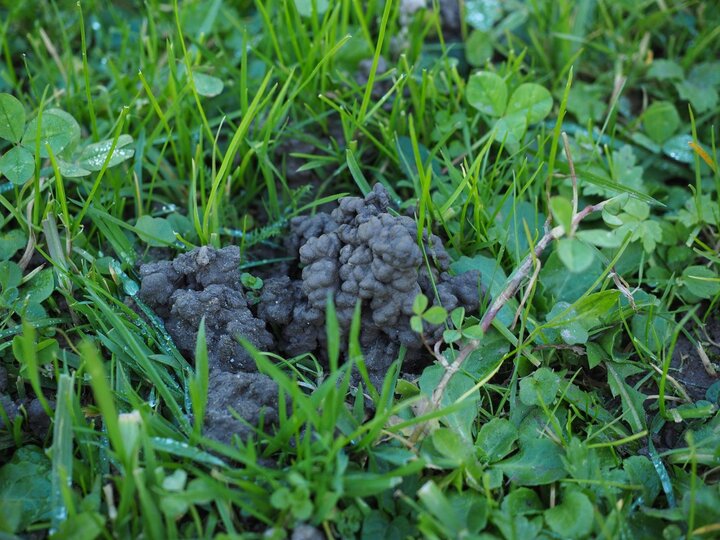Sarah Browning, Nebraska Extension Educator

Earthworms are vital to soil quality and the overall health of your lawn. Image by Pixabay.com
Earthworms are very beneficial to a home lawn and landscape, serving as an indicator of healthy soil. Their movement through soil provides natural aeration, improving the growing environment for grass roots by increasing air and water movement in the soil. They also help decompose thatch and alleviate compaction.
However, earthworm activity can also contribute to lawn roughness which is both annoying and dangerous. Earthworm activity is only one of several factors contributing to lawn bumpiness, but is often the most recognizable. This lumpiness or roughness happens slowly over the course of many years, so is most commonly found in older lawns.
As earthworms move through the soil, they leave behind roughly cone-shaped mounds of soil. These soil mounds typically don’t “dissolve” or disperse over the soil surface by themselves, so they accumulate over time. Earthworm activity does not damage or kill turfgrass, but their activity may be more evident in areas with thin turf.
Another "problem" associated with earthworms is the movement of large numbers to places where they are unwanted (for example, on sidewalks or patios, and in swimming pools). Earthworms moving out of a lawn after a heavy rain is a common sight.
To hear the passion with which people seek a "control" for earthworms makes the worms sound like the worst pest imaginable. But it’s important to remember, earthworms are vital to soil quality and the overall health of your lawn.
Note - If you have an older lawn and the soil roughness has developed gradually over time, the most likely culprit is one of the European earthworm species, not the invasive Asian jumping worm. More information on Asian jumping worms from Purdue University Extension.

Management
There are no pesticides labeled for the control of earthworms. Although some pesticides and fertilizers are known to have an impact on earthworms, none can be recommended as controls. Compared to the pesticides (especially insecticides) used one or two decades ago, today's pesticides have relatively little impact on earthworm populations, in part because of the registration process that examines adverse environmental effects such as mortality to beneficial, non-target organisms (including earthworms).
Various lawn care practices can help reduce the problem of a bumpy lawn. Bumpiness in sparse, thin lawns will be less noticeable if a healthy thick turf is reestablished to provide cushioning for your feet Overseed with either Kentucky bluegrass or turf-type tall fescue, or a blend of both. Use proper fertilization, mowing and irrigation practices to keep the turf healthy and thick. Fall, August 15 to September 15, is the best time for seeding, so this is a good time to get started repairing thin areas.
Mechanical techniques to reduce bumpiness can also be used to gradually reduce existing roughness. Core aeration, power raking and verticutting are all mechanical processes which can help shave off the high spots and fill in a lawn’s low spots. Core aeration is the best way to prepare soil for overseeding, so can be used in combination with overseeding of thin areas.
Power raking and verticutting are damaging to grass so should be done during cool weather when grass is growing actively enough to recover. September/October or April/May are good times to focus on these management techniques. Adjust the power rake teeth so they are low enough to shave off the tops of soil mounds, but not so low they pull up grass crowns or roots. Don’t power rake or verticut when temperatures are high or the turf is drought-stressed.
If only a small area is affected, hand raking with a stiff-tine rake is another option.
Remember, roughness accumulates over several years and won’t be eliminated in one year. It will take several years of work to gradually reduce bumpiness.
Don’t…
Use of a heavy roller to push the soil mounds down is not recommended. While rolling may remove some roughness, it also damages turf by compacting the soil. Compacted soil ultimately reduces turfgrass vigor and eventually leads to a thinner lawn.
Irrigation
Finally, make sure your irrigation practices are not contributing to the problem. Frequent, shallow irrigation encourages worms to stay near the soil surface where there is moisture. Deep, infrequent irrigation enables worms to stay deeper in the soil, avoiding soil castings on the surface.
Acknowledgement - Our thanks to Don Jansen, former Nebraska Extension Educator, the author of the original version of this article.
Images from Pixabay.com.